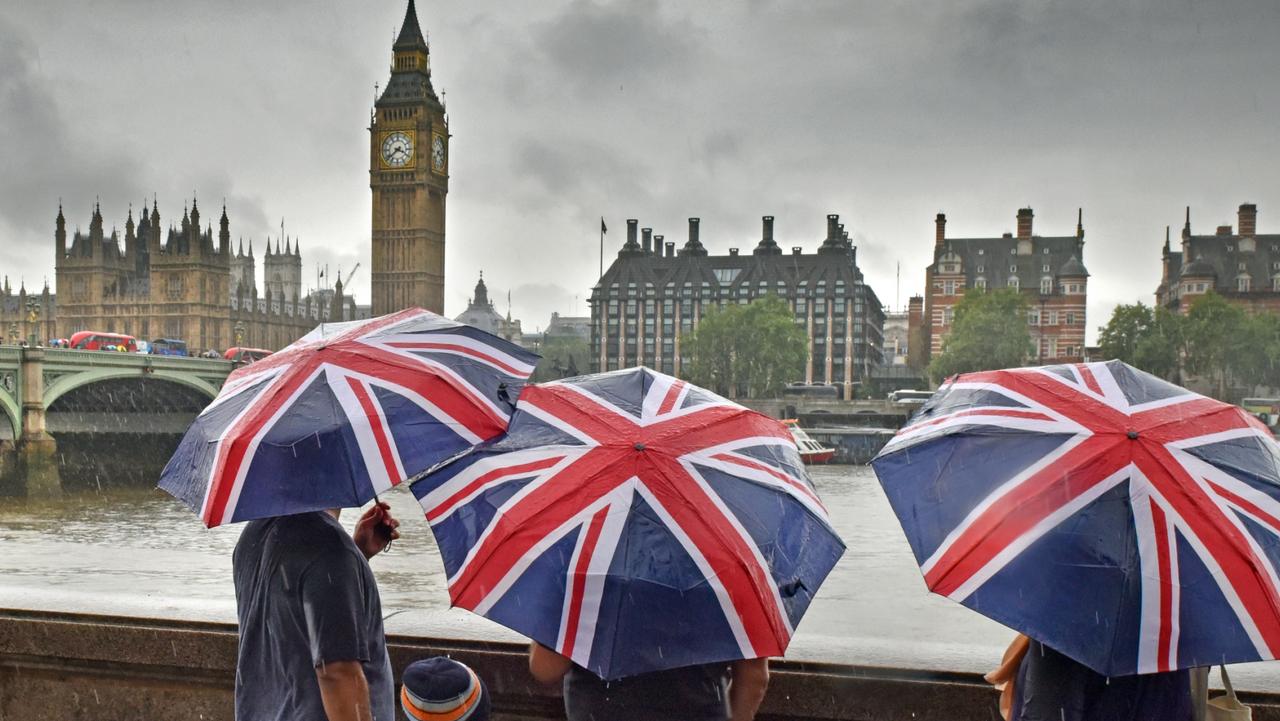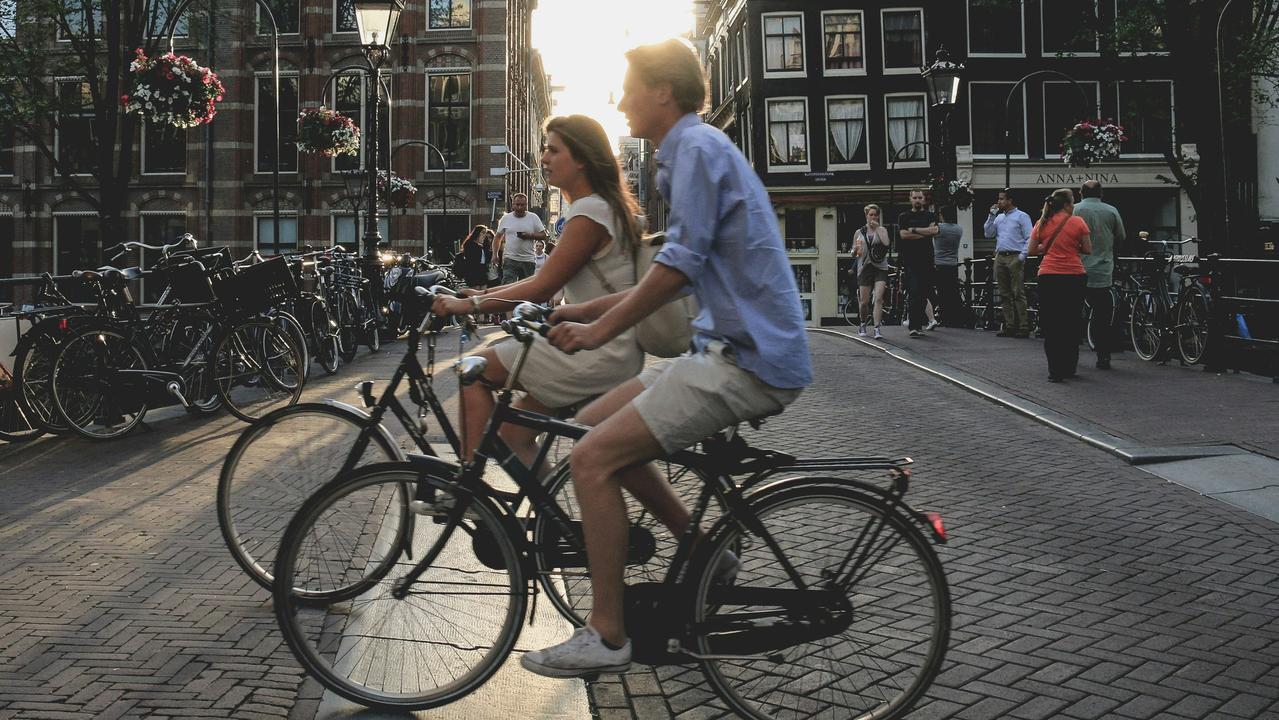The mystical hotel one step closer to heaven
FOR MILLENNIA, cavemen, pagan tribes, Ancient Greeks, Romans and monks have been hypnotised by the mystical power of Monte Conero. Now travellers can stay there.

THE first thing that hits me is the fog. A spooky, thick fog that you could cut with a knife.
As I drive uphill along the flanks of Monte Conero, a sacred promontory rising in Italy’s Marche region, I feel like being cast into yet another sequel of The Lord of the Rings.
I’m stepping into a convent, but it’s not what it seems. What used to be a place of prayer and meditation has been transformed into a retreat, where you can go for a weekend away to detox and de-stress.

The Hotel Monte Conero, set at 600 metres at the highest tip of the hill, used to be an abbey fortress. Built by monks in the year 1084, it’s now a luxury resort located in a five-hectare park with spa, outdoor infinity pool and a panoramic restaurant overlooking picturesque fishermen villages.
I’m one step closer to heaven, in every sense.
Mystical stays are the latest fad, and today you don’t need to be a monk to sleep in a (luxury) monastery. Ancient convents, ashrams, crypts and even Holy Inquisition dungeons have been restyled into “offline” boutique hotels that lie close to pilgrimage sites. Monte Conero is near Loreto, where the Virgin Mary’s house is believed to have been transported by angels.

So for a couple of days I indulge in a soul-cleansing stay. I sleep in a friar cell turned into a suite with wooden furniture and a praying stool. It’s suspended above the hillside’s chasm.
For millennia cave men, pagan tribes, Ancient Greeks and Romans, hermits, ascetics, and spiritual-searching travellers have been hypnotised by the mystical power of Monte Conero. And it’s not hard to understand why: The hill rises like a cathedral in the middle of nowhere, covered by a dense forest surrounded by the sea. It’s the highest peak in the region and humans have always looked to it in awe.
Not everyone, though. “Honestly, I don’t see why people are so fascinated by this place. Sure, it lies close to St. Francis Route and legend says that even the Knights of Malta stayed here, but I’m the third generation of owners and to me all of this is normal”, says owner Augusto Melappioni.
“I was born and have lived here all my life, and I can tell you one thing: When my grandfather purchased the convent, there were no roads and he had just one donkey named Fuffi. The animal was his only means of transportation. Life was hell.”

When Melappioni’s grandfather arrived here in 1938, the abbey had already been abandoned and was almost crumbling to pieces. The monks had fled at the end of the 1800s when Italy’s new state confiscated Church properties. He was a pork butcher, but had a dream: to become the owner of the ashram and quit making sausages. He fulfilled it. When World War II struck, he was the only one to remain. He endured, made sacrifices and eventually the entire property passed into his hands.
“Initially he was an irregular resident but then little by little he took control of it, buying bits and pieces as the pig trade flourished,” Augusto proudly recounts.
The old man might not have been seduced by the surrounding mysticism but he sure learnt how to make a fortune out of it.
“Grandad saw all these people coming here for walks, enchanted by the hill. He understood it had economic potential so he decided to turn it into a hotel.” Talk about God’s ways being infinite.

The ashram sits on the ashes of a former pagan temple. “You see those hollow rocks carved inside-out?” Augusto points at a heap of long stones jutting out of the ground. “The entire mountain is covered in these. They were used to drain the blood during rituals of sacrifices.” Human sacrifices?! My hair stands on end.
“I sure hope not! Possibly animal sacrifices,” he replies with a laugh. Pagans had a knack for dismembering birds to seek Gods’ answers and offering animals to win them over. Fun.
Yet the origins of Monte Conero are even older: Cavemen were the first inhabitants. They drew stunning wall paintings — and maybe they even carried-out cannibalistic rituals. Bits of arrows dot the landscape.
These tales are a bit too gruesome so I decide to go for some trekking along one of the many routes that depart from the abbey. I come across Roman tunnels, grottos with wells and altars, and other mysterious rock inscriptions that apparently refer to fertility rites and healing fountains. The paths leads me to the primitive-looking “Friars’ Beach of Sirolo”: turquoise waters, white-yellow pebbles and fluorescent-green vegetation. Jurassic Park.

At dinner we’re served a twisted-shaped handmade pasta called “stringoli” or “strozzapreti” — literally meaning “priest-stranglers”. Folklore says that poor housewives, while preparing the pasta, used to curse wealthy, greedy priors that they may choke while eating. The term also comes from the leather knots used by bandits to strangle monks in the 1800s when anticlericalism was at its peak.
The restaurant is named after a famous humanist monk, Merlin Cocai, who was also a gastronomer and was sent here by the Church in the 1500s to repress “internal” conflicts between the three rivalling monasteries of Monte Conero. The conflict between the pious brothers was so bitter it led to a fire which destroyed a big chunk of this ashram.
“Merlin Cocai was a food addict and he took note of the ‘stringoli’, saying they were delicious. See, today we still prepare the same dishes as in the past,” Augusto says. I just pray I won’t choke.
The next day my morning starts early: 7am. But not for prayers — a rooster screams. I look-out the window and all I can see is fog twisting around the lush Mediterranean vegetation. Silence rules, it feels like the abbey is suspended in midair, inside a cloud. As I make my way to the breakfast room, the ancient refectory, I stumble into a group of yoga freaks. They’re dressed in white, barefoot and seem to be sleeping.
“That’s the magnetism I was talking about. How can they sit like that and meditate? They’re crazy.” Augusto is more flabbergasted than me.
By noon I figure it’s about time to end my tech fast. I feel a compulsive need to check my email. But I do feel reborn. I’m relaxed. Driving downhill back to modernity, however, I’m glad I’m not on the back of a donkey.




